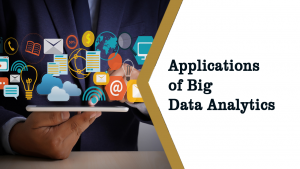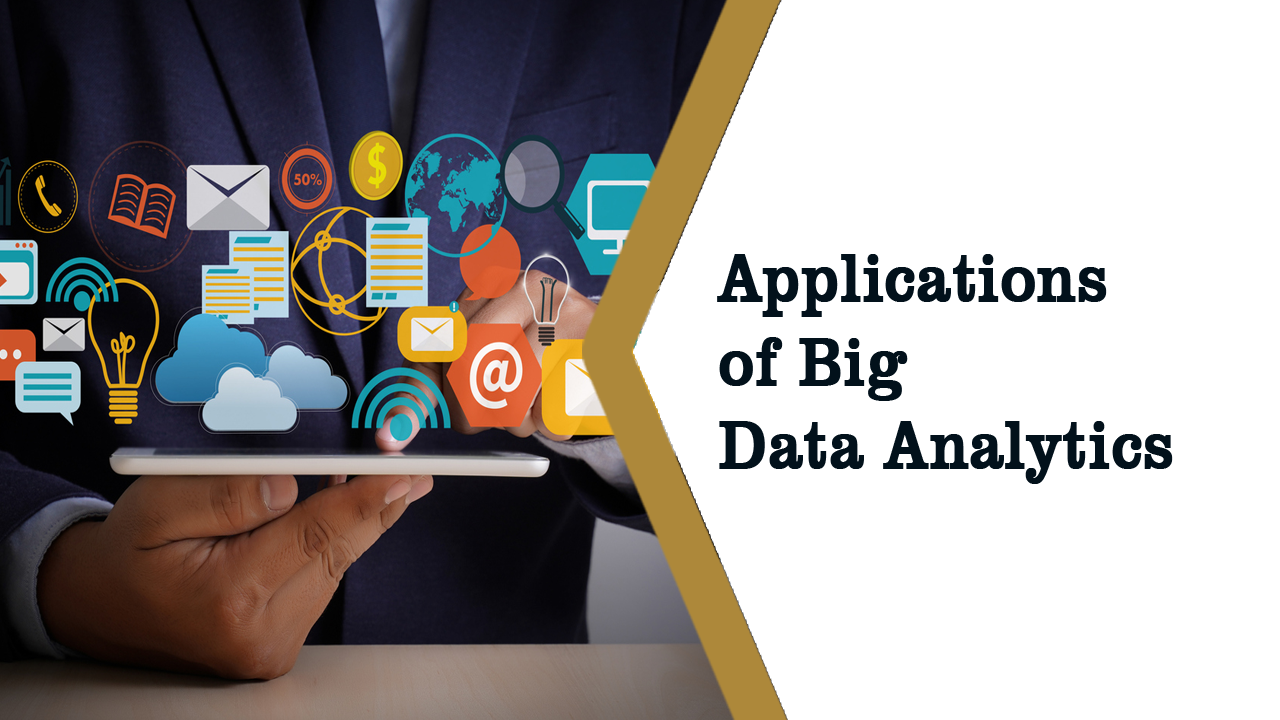Introduction Applications of Big Data Analytics
Big Data Analytics has become increasingly popular in recent years, as businesses and organizations seek to extract valuable insights from their data. With the ability to process and analyze vast amounts of data, Big Data Analytics has the potential to transform industries and drive innovation. In this article, we will explore some of the applications of Big Data Analytics, and how it is being used across different industries. 
Healthcare Applications of Big Data Analytics
In the healthcare industry, Big Data Analytics is being used to improve patient outcomes and reduce costs. By analyzing patient data, doctors can identify patterns and trends that can help them diagnose diseases and prescribe treatments. Additionally, Big Data Analytics can be used to track the spread of diseases and predict outbreaks, allowing healthcare organizations to take proactive measures to contain them.
Retail
In the retail industry, Big Data Analytics is being used to understand consumer behavior and optimize the shopping experience. By analyzing customer data, retailers can identify trends and preferences that can help them tailor their offerings and marketing strategies. Additionally, Big Data Analytics can be used to optimize inventory management, pricing, and supply chain operations, leading to cost savings and improved efficiency.
Finance
In the finance industry, Big Data Analytics is being used to identify and prevent fraud, as well as to improve risk management. By analyzing transaction data, financial institutions can identify unusual patterns or behaviors that may indicate fraud, and take action to prevent it. Additionally, Big Data Analytics can be used to analyze market trends and forecast changes, allowing financial institutions to make more informed investment decisions.
Manufacturing
In the manufacturing industry, Big Data Analytics is being used to optimize production processes and reduce costs. By analyzing data from sensors and other sources, manufacturers can identify inefficiencies and areas for improvement in their operations. Additionally, Big Data Analytics can be used to predict equipment failures and schedule maintenance proactively, reducing downtime and improving productivity.
Transportation
In the transportation industry, Big Data Analytics is being used to optimize logistics and improve the customer experience. By analyzing data from GPS and other sensors, transportation companies can optimize routes and schedules, reducing fuel costs and improving delivery times. Additionally, Big Data Analytics can be used to predict maintenance needs and schedule repairs proactively, reducing downtime and improving safety.
The Future of Big Data Analytics
As Big Data Analytics continues to evolve, we can expect to see even more innovative applications across different industries. For example, in the energy sector, Big Data Analytics can be used to optimize the use of renewable energy sources and reduce carbon emissions. In the education sector, Big Data Analytics can be used to personalize learning experiences for students and improve educational outcomes.
Conclusion
In conclusion, Big Data Analytics is being used in a wide range of applications across different industries, from healthcare and retail to finance and transportation. By analyzing vast amounts of data, businesses and organizations can gain valuable insights that help them make better decisions and improve their operations. As Big Data Analytics continues to evolve, we can expect to see even more innovative applications that transform industries and drive innovation.
Big data analytics has revolutionized various industries, and healthcare is no exception. The integration of advanced analytics into healthcare practices offers transformative potential, enhancing patient outcomes, optimizing operations, and driving innovation. By leveraging large volumes of diverse data, healthcare providers and organizations can gain insights that were previously out of reach. This article explores several key applications of big data analytics in the healthcare sector and how they are shaping the future of medicine.
1. Personalized Medicine
Overview: Personalized medicine aims to tailor healthcare treatments and interventions to individual patients based on their unique genetic, environmental, and lifestyle factors. Big data analytics plays a crucial role in understanding these individual differences and providing targeted therapies.
Applications:
- Genomic Analysis: By analyzing genetic data, researchers can identify genetic mutations and variations linked to specific diseases, leading to more precise diagnoses and personalized treatment plans.
- Customized Drug Therapies: Big data helps in determining how different patients respond to various medications, enabling the development of customized drug regimens that maximize efficacy and minimize side effects.
Example: The use of big data in genomics has led to the development of targeted cancer therapies, such as those based on the genetic profiles of tumors, which improve treatment outcomes and reduce adverse effects.
2. Predictive Analytics for Disease Prevention
Overview: Predictive analytics involves analyzing historical and real-time data to forecast future events and trends. In healthcare, it is used to predict disease outbreaks, patient risk factors, and potential health crises.
Applications:
- Chronic Disease Management: Predictive models analyze data such as patient history, lifestyle factors, and lab results to forecast the likelihood of developing chronic conditions like diabetes or heart disease.
- Epidemic Prediction: By analyzing patterns in infection rates, climate data, and population mobility, predictive analytics can forecast disease outbreaks and inform public health responses.
Example: The use of predictive analytics during the COVID-19 pandemic helped public health officials anticipate surges in cases and allocate resources more effectively.
3. Enhancing Patient Care and Outcomes
Overview: Big data analytics can significantly improve patient care by providing insights into treatment effectiveness, patient preferences, and overall healthcare quality.
Applications:
- Clinical Decision Support: Data-driven tools assist healthcare providers in making informed decisions by providing evidence-based recommendations and alerting them to potential issues.
- Patient Monitoring: Wearable devices and remote monitoring systems generate continuous data that can be analyzed to track patient health metrics and detect early signs of deterioration.
Example: The use of electronic health records (EHRs) combined with predictive analytics has improved the management of chronic diseases by providing healthcare providers with comprehensive patient histories and treatment outcomes.
4. Operational Efficiency and Cost Reduction
Overview: Big data analytics helps healthcare organizations streamline operations, reduce costs, and improve overall efficiency by identifying inefficiencies and optimizing resource allocation.
Applications:
- Resource Management: Analytics can optimize scheduling, staffing, and inventory management to ensure that resources are used efficiently and costs are minimized.
- Fraud Detection: Analyzing billing data and claims can help detect and prevent fraudulent activities and billing errors, reducing financial losses.
Example: Hospitals use big data analytics to manage patient flow and reduce wait times by predicting peak periods and adjusting staffing levels accordingly.
5. Drug Discovery and Development
Overview: Big data analytics accelerates the drug discovery process by analyzing vast datasets to identify potential drug candidates, predict their effectiveness, and streamline clinical trials.
Applications:
- Identifying Drug Targets: By analyzing genetic and biochemical data, researchers can identify new targets for drug development and design more effective treatments.
- Clinical Trial Optimization: Big data helps in designing more efficient clinical trials by identifying suitable patient populations and predicting trial outcomes.
Example: The analysis of electronic health records and genomic data has led to the discovery of new drug candidates and the repurposing of existing drugs for new therapeutic indications.
6. Health Outcomes Research
Overview: Health outcomes research involves studying the effectiveness of healthcare interventions and treatments to improve patient outcomes. Big data analytics provides valuable insights into treatment efficacy and patient responses.
Applications:
- Comparative Effectiveness Research: Analyzing data from various treatment modalities to determine which interventions are most effective for specific patient populations.
- Quality of Care Evaluation: Assessing healthcare processes and outcomes to identify areas for improvement and ensure high-quality care delivery.
Example: The use of big data in evaluating the effectiveness of different cancer treatments has led to improved treatment protocols and better patient outcomes.
7. Population Health Management
Overview: Population health management focuses on improving health outcomes across entire populations by analyzing data to identify trends, health risks, and opportunities for intervention.
Applications:
- Risk Stratification: Analyzing patient data to categorize populations based on health risks and tailor interventions accordingly.
- Preventive Care Programs: Designing and implementing programs to address common health issues within specific populations based on data-driven insights.
Example: Health systems use big data to implement preventive care programs targeting high-risk populations, such as diabetes prevention programs based on community health data.
8. Medical Imaging and Diagnostics
Overview: Big data analytics enhances medical imaging and diagnostics by improving image analysis and supporting more accurate and timely diagnoses.
Applications:
- Image Analysis: Machine learning algorithms analyze medical images, such as MRI and CT scans, to detect anomalies and assist radiologists in diagnosing conditions.
- Diagnostic Accuracy: Data-driven tools enhance diagnostic accuracy by providing decision support and integrating imaging data with other clinical information.
Example: AI-powered tools have improved the accuracy of detecting conditions such as tumors in medical imaging, reducing the rate of false positives and negatives.
Conclusion
Big data analytics is transforming the healthcare industry by providing deeper insights, improving patient outcomes, and enhancing operational efficiency. From personalized medicine and predictive analytics to drug discovery and population health management, the applications of big data in healthcare are vast and impactful. As technology continues to advance, the potential for big data analytics to drive innovation and improve healthcare delivery will only grow, leading to better health outcomes and a more efficient healthcare system.
